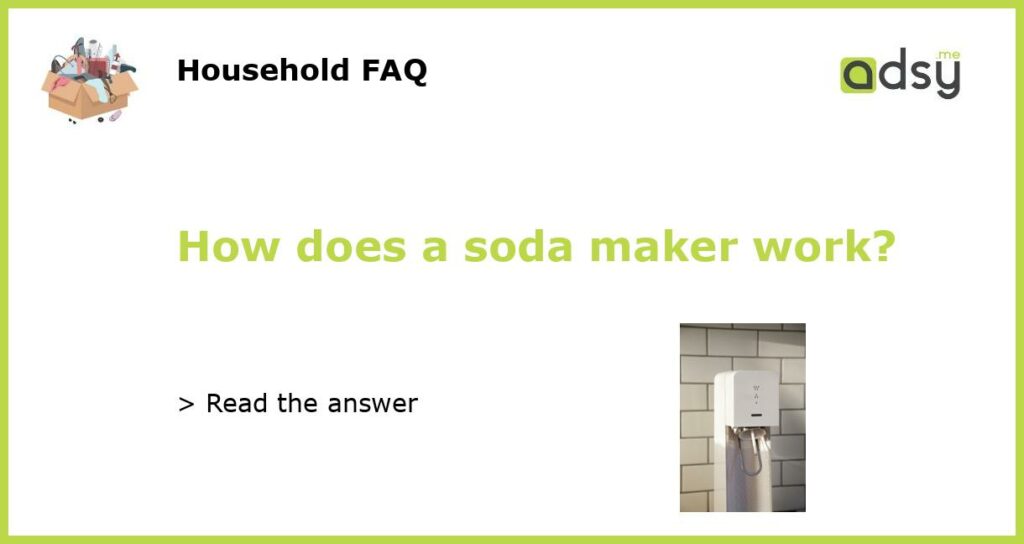How Does a Soda Maker Work?
Soda makers have become extremely popular in recent years as people look for ways to enjoy carbonated beverages at home without the need for single-use plastic bottles. But have you ever wondered how these machines actually work? In this article, we will take a look at the inner workings of a soda maker and explain the process step by step.
Carbonation and Pressurization
The first step in the soda making process is carbonation. Carbon dioxide (CO2) is what gives soda its characteristic fizziness, and this gas needs to be dissolved into the liquid to create the bubbles. Most soda makers use small CO2 cylinders that attach to the machine. The CO2 gas is released from the cylinder and injected into the water or drink mix inside the soda maker’s bottle.
Once the gas is injected, the soda maker relies on pressurization to force the CO2 to dissolve into the liquid. This is typically accomplished by sealing the bottle tightly and using a manual or automatic mechanism to pump air or release pressure into the bottle. The increased pressure helps the CO2 molecules dissolve more easily, resulting in carbonated liquid.
Flavoring and Sweetening
After the carbonation process, it’s time to add flavoring and sweetening to the carbonated water. Most soda makers come with a variety of flavor options, such as fruit syrups or concentrate mixes. These flavors are typically added to the bottle and mixed with the carbonated water using a stirring mechanism or by simply shaking the bottle.
Some soda makers also allow you to adjust the level of sweetness in your drink. This can be done by adding a specific amount of sweetener or by using pre-measured tablets or pods that contain the desired amount of sweetness. These sweeteners are typically artificial or natural sugar substitutes, depending on the user’s preference.
Dispensing and Serving
Once you have added flavoring and sweetening to your carbonated water, it’s time to dispense and serve your homemade soda. Most soda makers have a dispensing mechanism that allows you to pour the carbonated drink directly from the bottle into your glass. This can be done by pressing a button, pulling a lever, or using a carbonation lever that releases the pressure inside the bottle.
Some soda makers also come with specific accessories, such as carbonation caps, that allow you to transfer the carbonated water into separate bottles or containers. This is particularly useful if you want to store your homemade soda for later use or take it with you on the go.
Maintenance and Refilling
Like any other appliance, soda makers require regular maintenance and refilling to ensure optimal performance. The CO2 cylinders used in soda makers have a limited capacity and will eventually need to be replaced or refilled. Most soda maker brands offer refillable CO2 cylinders that can be exchanged for full ones at various locations or through mail-order services.
In addition to refilling the CO2 cylinders, it’s also important to clean and maintain your soda maker regularly. This includes rinsing the bottle, cleaning any attachments or nozzles, and descaling the machine if necessary. Proper maintenance will not only prolong the lifespan of your soda maker but also ensure the quality and taste of your homemade soda.
Soda makers provide a convenient and eco-friendly way to enjoy carbonated beverages at home. The process of making soda involves carbonation, pressurization, flavoring, sweetening, dispensing, and serving. By understanding how a soda maker works, you can make delicious and customized sodas right in your own kitchen, while reducing your environmental impact and saving money in the long run.






